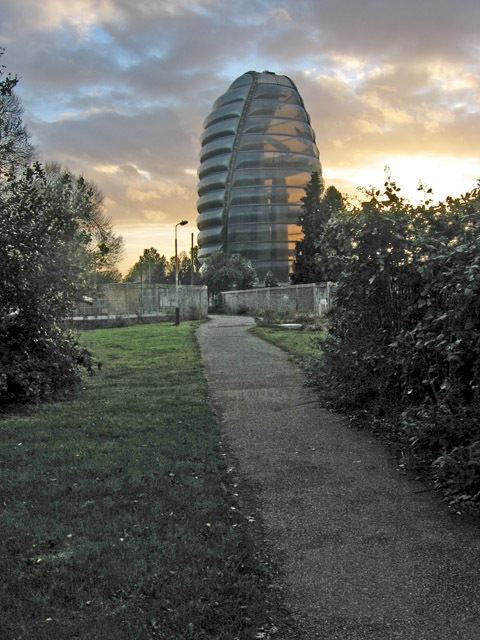Established 2001 (2001) Website National Space Centre Phone +44 116 261 0261 | Location Belgrave, Leicester Opened 30 June 2001 | |
 | ||
Type Space (and aerospace) museum Address Exploration Dr, Leicester LE4 5NS, UK Hours Open today · 10AM–4PMWednesday10AM–4PMThursday10AM–4PMFriday10AM–4PMSaturday10AM–5PMSunday10AM–5PMMonday10AM–4PMTuesday10AM–4PMSuggest an edit Similar New Walk Museum, Abbey Pumping Station, King Richard III Visitor Ce, Tropical Birdland - Leicestershire, Belvoir Castle Profiles | ||
national space centre leicester england
The National Space Centre is a museum and educational resource covering the fields of space science and astronomy, along with a space research programme in partnership with the University of Leicester. It is located on the north side the city of Leicester, England, next to the River Soar. Many of the exhibits, including upright rockets, are housed in a tower with minimal steel supports and a semi-transparent cladding of ETFE 'pillows' which has become one of Leicester's most recognisable landmarks.
Contents
- national space centre leicester england
- Family day out at the national space centre in leicester vlog
- History
- University of Leicester
- Main exhibits
- Digital visualisation
- Near Earth objects
- Events
- References
Family day out at the national space centre in leicester vlog
History
The building was designed by Nicholas Grimshaw, and it opened to the public on 30 June 2001. The tower is 42 m (138 ft) tall and claims to be the only place to house upright space rockets indoors.
University of Leicester
The centre arose from a partnership between the University of Leicester's Space Research Centre and local government agencies. The total project cost was £52m, £26m of which came from a Millennium Commission grant, and the rest from private sector sponsors. It is run as an educational charity, and offers science workshops for school children of all ages.
The National Space Centre currently has post-doctoral science researchers based at the University of Leicester's Space Research Centre (SRC) and the University of Nottingham's Institute of Engineering Surveying and Space Geodesy (IESSG).
Main exhibits
The Centre has on display one of only three known Soyuz spacecraft in Western Europe (there is one in France at the Cité de l'espace and, in the United States, another Soyuz spacecraft is at the Smithsonian Institution as part of their Apollo-Soyuz Test Project display).
The centre has six main galleries of exhibits and visitor activities covering space flight, astronomy and cosmology. The attraction also includes a Digistar 3 dome cinema and planetarium, a gift shop and a restaurant. The restaurant is situated beneath the two nozzles of the Blue Streak and PGM-17 Thor rockets.
Digital visualisation
The Centre's own digital visualisation team, NSC Creative, make all the "fulldome" planetarium shows shown at the Centre. By 2011, NSC Creative fulldome shows are playing in over 220 planetaria in 27 countries worldwide. These productions include the official International Year of Astronomy (IYA2009) planetarium show "We are Astronomers" which was funded by the UK Science and Technology Facilities Council (STFC).
Near Earth objects
The failed Beagle 2 Mars spacecraft was controlled from the centre's Landing Operations Control Centre. UK Government's official Near-Earth object (NEO) Information Centre is also based at the centre.
Events
In 2007, the National Space Centre celebrated 50 Years in Space: the anniversary of the first satellite, Sputnik.
